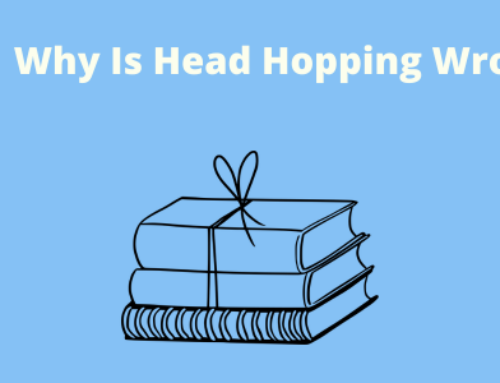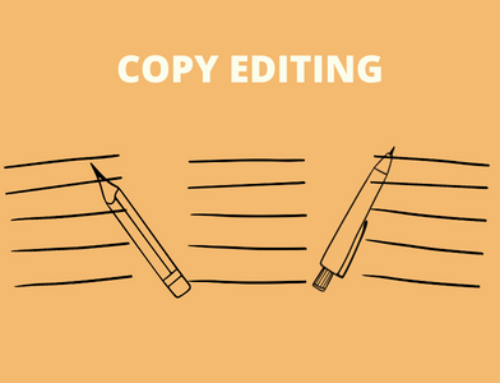Writing Sentences That Keep Readers Hooked
Have you ever found yourself losing interest while reading, even when the topic is something you’re genuinely excited about?
Often, the culprit behind your waning focus is not the subject matter itself but how it’s written. Specifically, sentences that follow the same subject-verb format can quickly turn a novel that could have been engaging into a book you might not finish.
In this blog post, we’ll explore why changing up your sentence structure is not just a matter of style — it’s essential for keeping your readers hooked from start to finish.
Regular Subject-Verb-Object Sentences

The boy ran; the baby cried; the girl flirted. You probably fell asleep when your English teacher taught something so obvious because it’s a logical way to write, but there is so much more to interesting writing than making every sentence dress the same way. Who wants to reach into a drawer to pull out the same sweater and pants every morning?
Here are some reasons why you should change up your subject-verb-object sentences:
- They Lack Variety. Mixing up sentence lengths, openings, and structures helps create a more dynamic and interesting reading experience and keeps readers engaged.
- The Pacing Is a Bit Flat. Using a combo of short, punchy sentences and longer, more complex ones lets writers control the rhythm and pacing for the story. Varying sentence structure helps speed up or slow down the narrative as needed.
- They Weaken an Author’s Voice and Style. Repetitive sentence structures lack a unique voice or style instead of giving a story its own special “voice.” Trying out different syntax, word order, and sentence complexity helps writers develop a more engaging narrative voice and an immersive reading journey.
How Authors Write Engaging Sentences

Photo by Tima Miroshnichenko
Among the techniques authors choose from to avoid the repetitive rhythm of subject-verb-object sentences, a few stand out:
Inversion
Authors can invert regular sentence structure to place the predicate before the subject, often creating a more intriguing or dramatic effect.
In William Shakespeare’s “Sonnet 18,” instead of writing, “Sometime the eye of heaven shines too hot,” he wrote, “Sometime too hot the eye of heaven shines.” The inversion helped Shakespeare maintain the sonnet’s meter and rhyme scheme.
By putting the verb before the subject, the writer can draw the reader’s attention to the action rather than the subject. Inverting the expected word order can also build suspense or create an element of surprise for the reader. This can be an effective technique in storytelling to foreshadow events or underscore pivotal moments.
Beneath the floorboards, a dark secret lay hidden. Only by lifting the rotting planks would the truth be revealed.
Inversion can also be used for emphasis, drawing the reader’s attention to the action rather than the subject.
Radiant and brilliant shone her smile, its infectious joy illuminating the entire room.
Like Yoda, inversion becomes a distinctive linguistic trait that shapes the reader’s perception of the character.
“Speak you must,” the gangster growled.
Passive Voice
Instead of following the standard subject-verb-object format, the passive voice reverses this to become object-verb-subject, which can be useful when the doer of the action is unknown or irrelevant.
While passive voice is often overdone, and Grammarly will make you cut out every sentence using it, passive voice allows the object of an action to be placed front and center instead of taking second place.
Instead of saying, “The magician performed a trick,” you could write, “A trick was performed by the magician,” putting the emphasis on the trick rather than the magician.
Similarly, “The marathon was won by Sarah” focuses on Sarah’s achievement rather than who won the marathon.
Fragments and Ellipses
Leaving sentences incomplete or adding ellipses (…) allows authors to create a sense of urgency, suspense, or introspection, breaking up the predictability of their sentences. Unfortunately, most novice authors add far too many ellipses to their paragraphs and they becomes redundant.
However, fragmented sentences and the strategic use of ellipses can introduce a pause, create suspense, or denote an incomplete thought that leaves room for the reader’s imagination. They can make dialogue or a particular character’s voice feel more genuine.
For example, a fragmented sentence might read, “Storm coming. Dark clouds on that there horizon.” This conveys a brewing sense of doom without needing to say it.
Similarly, using ellipses can add depth to a character’s dialogue or internal monologue. Consider a scene where a character is hesitating to reveal a secret:
“I never told anyone this before, but… Well, it’s complicated.” The ellipses show the character’s hesitation, trailing thoughts, or a pause in conversation, adding authenticity and emotional depth.
Both fragmented sentence and ellipses give writers the chance to add to the emotional tone of their work, ensuring readers remain engaged and connected to the story.
Parallelism
Parallelism involves pairing up words by structure, sound, meaning, or meter in a series of sentences or phrases, creating a rhythm to the flow.
Here are a few examples of parallelism in writing:
“She loved singing, dancing, and playing the piano.” This parallelism repeats -ing, creating a pleasant rhythm.
Julius Caesar’s famous “I came, I saw, I conquered” uses parallel structure for emphasis and rhythm.
“The report was informative, engaging, and persuasive.” The parallelism in this sentence is in the repetition of adjectives.
“Ask not what your country can do for you — ask what you can do for your country.” John F. Kennedy’s iconic statement intensifies its call to action with parallelism.
Parallelism isn’t just a way to make sentences prettier; it also helps convey messages more effectively.
Interrogative and Exclamatory Sentences
Questions and exclamations give readers a pleasant change from subject-verb sentences, injecting emotion and inviting reader interaction.
Interrogative sentences open the door to the reader’s own thoughts and reflections, prompting a deeper engagement with the text.
For example, a character might ponder,
What if I had never taken that path? Where would I be now?
Why did she leave without saying goodbye?
Exclamatory sentences, on the other hand, express strong emotions or a high level of surprise, excitement, or disbelief.
They are often passionate, like,
“What an incredible discovery!” or,
“I can’t believe I finally did it!” or,
“That’s the last straw!”
These examples illustrate how interrogative and exclamatory sentences can be strategically used to add texture to a narrative, making it more vivid and engaging by highlighting the characters’ emotions and generating reader interaction.
Adjective and Adverb Fronting

Leading with adjectives or adverbs in sentences can change the focus and mood of a paragraph by emphasizing the details of a scene or action and dropping the reader into it straightaway.
“Exhausted and out of breath, the marathon runner crossed the finish line.”
“Silently, the snow began to fall, covering the streets in a blanket of white.”
“Furious at the betrayal, she refused to speak to her friend for weeks.”
“Quickly, the crowd dispersed as the rain began to pour.”
“Under the bright moonlight, the ancient castle looked as if it had sprung from a fairy tale.”
All these examples give a vivid portrayal of scenes, characters, and emotions.
Write to Engage
Let’s experiment with this. Imagine you’re in a diner and a waitress puts a milkshake in front of you. You can write:
I drank some of the milkshake or:
Angrily, I slurped the milkshake through the fat straw. (adverb fronting)
“This milkshake is so cold!” (exclamatory sentence)
Why did I order something so filling before dinner? (interrogative sentence)
The milkshake was frothy, icy, and tantalizing. (parallelism)
“I’m not sure I should…” (ellipses)
“Fattening. So many carbs.” (fragmented sentence)
The milkshake was finished off by yours truly. (passive voice)
Over my sugary teeth, I ran my tongue. (inversion)
By integrating these techniques instead of writing simple subject-verb-object sentences, you can craft a writing style that captivates readers with your unique voice and dynamic flow, making the readers’ experience anything but monotonous.





